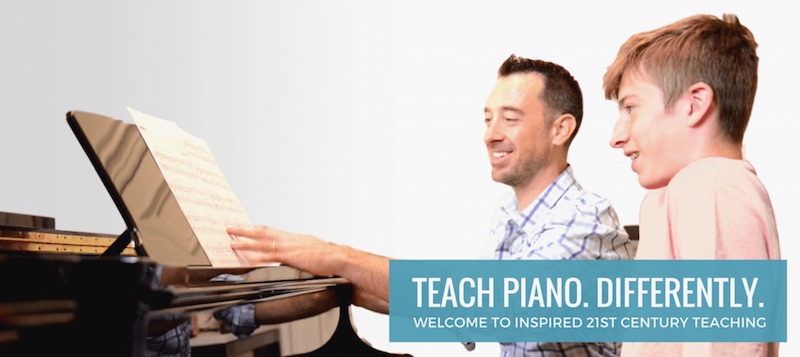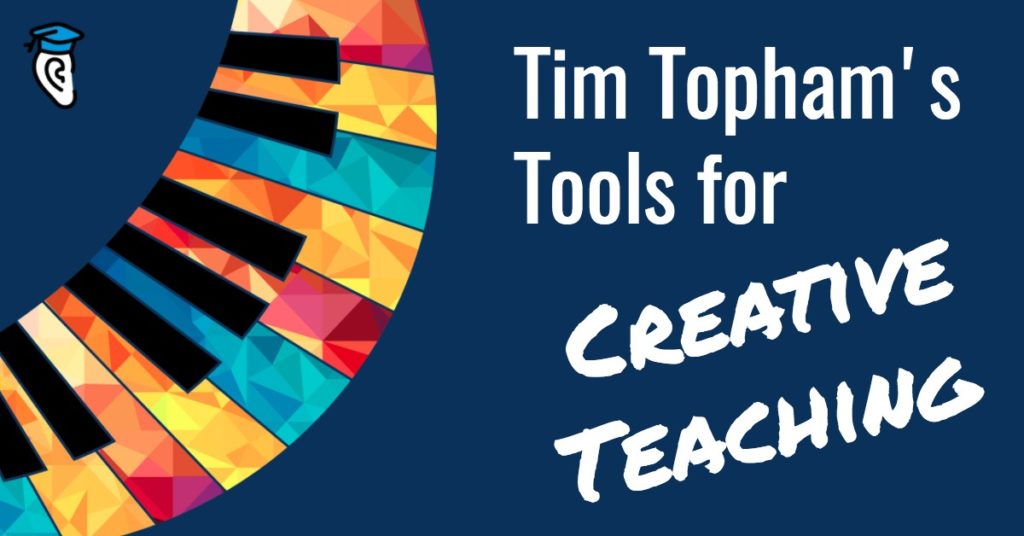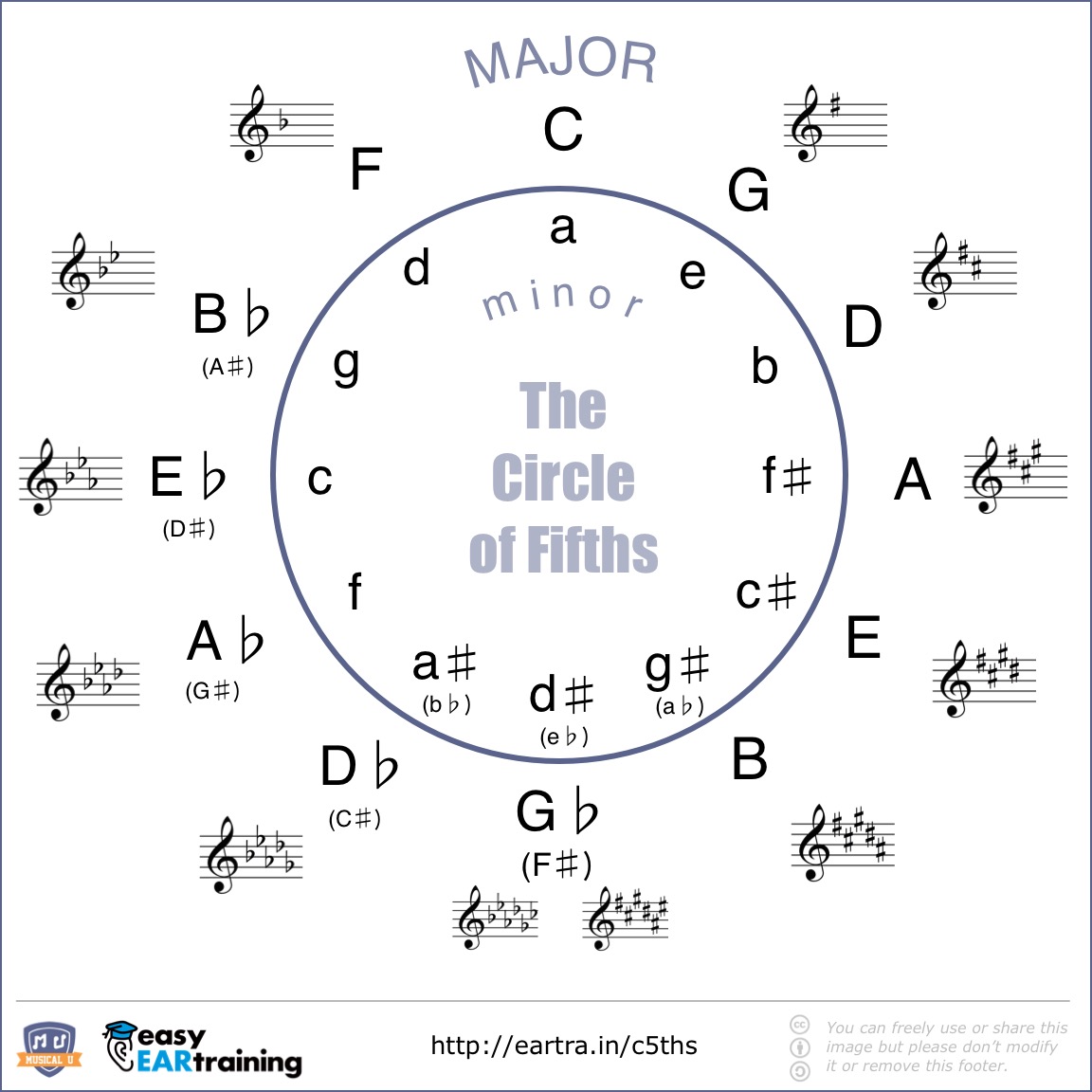Tim Topham is the piano teachers’ piano teacher. While actively working students, he has turned cherished traditions on their heads and taken his “teach differently” approach to the piano teachers themselves through his piano teaching website.
Creativity was the focus in the first part of this interview. Today we turn to specifics:
- Teaching chord progressions and musical structure
- The importance of listening for both traditional and self-taught students
- Understanding the pulse
- Opening to new teaching strategies
 I love exploring chord progressions and pentatonic improvisations with students, because it’s a relatively simple thing to do once you’ve got a couple of skills behind you. I can’t believe that, for such a foundational aspect of music, more teachers don’t concentrate on chord progressions. Particularly, being able to understand the structure of music—not just pop, but also classical music, and all the contemporary piano solos out there—because they all follow pretty similar formulas really.
I love exploring chord progressions and pentatonic improvisations with students, because it’s a relatively simple thing to do once you’ve got a couple of skills behind you. I can’t believe that, for such a foundational aspect of music, more teachers don’t concentrate on chord progressions. Particularly, being able to understand the structure of music—not just pop, but also classical music, and all the contemporary piano solos out there—because they all follow pretty similar formulas really.
To me it’s important that students understand how music is constructed. Understanding chords will not only help them play and read better, they’ll be able to compose their own music.
I use the circle of fifths a lot. Most people have it in the bottom drawer and don’t really know what to do with it, but for me it’s something I use with every student in every lesson. The circle of fifths diagrams of how chords relate to each other.
For example, look at the big C. The chords on the left and right, F and G, are all chords that work really well together in the key of C, and so do the relative minors underneath it.
Ask your student to create their first composition using a simple chord progression. So you can explain to them that we’re going to work in the key of C, that F and G are two chords that work in combination with C really well. Let’s go C, let’s go F, let’s go G, and back to C.

Just four beats per measure on each chord. At the end of that they’ve effectively composed their first chord progression. That’s just the first seed setting that you can do.
Of course after that you can explain that that’ll be very boring if you only use three chords, so why don’t we add A minor into the mix. You can talk about that most famous pop progression which is the I, V, vi, IIV progression, so C, G, A minor, F. Your kids can play through that, you can sing along to it and show them how many songs go with it.
They start getting a feeling for how simple music construction actually is using chords. Of course, the most important thing is to then relate this to whatever music they’re learning.
Let’s take an early intermediate level student who’s playing some piece by any of the big, modern, piano soloist composers. Walk your student through the piece and if it’s in C major help the student find where it moves to an A minor chord, because it will. Find where it moves to the F chord, and it will. Now what has the composer done to make it more interesting? He’s broken up the left-hand chord into an Alberti bass line—and so on.
Make those connections back to the music they’re actually playing. And watch the students’ eyes go wide with amazement when they go beyond reading the dots on the page and suddenly understand how the music’s made.

There you go, we’re definitely on the same page then.
Q: Absolutely. So what about those students who want to dive into this creative world, but either they aren’t taking in-person lessons, or their teacher doesn’t have the tools to teach them improvisation, or composing, or songwriting? They try a tutorial but then they don’t know if they’re doing it right. How do they know if they’re improving? How do they know when it’s time to try something new?
Chris, perhaps your ear training stuff is a great answer here. Look—and this is a cold, hard truth—a lot of students simply don’t listen to what they’re doing. Learning written music is a real killer for this. They mindlessly play and expect their teacher to correct the errors.
Whether they have a teacher or not, one simple idea would be to record themselves on their phone—it’s incredibly easy to do that—and listen back to what they’re playing. They can listen more accurately without being totally absorbed in playing the notes. See if they’re keeping a steady beat, see if it sounds like they think it sounds.
This is a great way to build self-reliance—not every teacher feels confident enough to nurture that, unfortunately.
Even with all the independent learning resources available, however, an in-person or online tutor is invaluable. I know not everyone thinks they can afford it. But having someone who can quickly assess your individual learning style and needs, simply saves a lot of time when you’re trying to decide the best path to reach your musical goals.

Just listening. It just sounds stupid but I’m just amazed at the difference it makes when you simply listen actively to what you’re doing.
Then you can get into the nitty gritty of it all. Can they actually decipher major from minor? Do they know interval relationships? Can they hear bass lines in a mix of music? Of course these are all skills that unfortunately the reading approach doesn’t help, because students right from the beginning are not being helped to listen as actively as they should. So it’s very hard when we come along and say, “Well, you should be listening” and it’s like, “Well I haven’t had to do that before.”
I’m very much an exponent of Dr. Gordon’s GIML music learning theory—teach music the way language is taught. The first thing is listening. Listening, and then speaking, and learning patterns, etc. Reading comes along way down the line. If students do more listening at the beginning and more singing, they’re more likely to be better listeners later on.
 Rhythm is really crucial. Most students can tell that they played a wrong note, but I do have students who can’t tell when they’ve dropped a beat out of a bar. To me feels like we’ve gone off the rails, but to them? They don’t notice it. The one most important thing we can drum into students from the beginning is a real sense of pulse, of beat.
Rhythm is really crucial. Most students can tell that they played a wrong note, but I do have students who can’t tell when they’ve dropped a beat out of a bar. To me feels like we’ve gone off the rails, but to them? They don’t notice it. The one most important thing we can drum into students from the beginning is a real sense of pulse, of beat.
From there, an understanding of the difference between duple and triple meter and an understanding how to move, clap, or tap, pulse and rhythm at the same time. Tapping your foot to a beat while tapping or clapping a rhythm, things like that are really important. Even just vocalizing rhythm while you’re clapping a beat.
I’m testing this with one of my beginners—taking a completely different approach this year. He’s 8, fantastic kid, really enjoying his lessons, and for the first 8 weeks I did nothing but creative, and listening, and singing, and clapping, and tapping, and all this kind of stuff with him. I’m eager to see how that flows on in the coming year—whether he can listen more attentively than my other students. I’m always one for learning as I teach, and this is a new kind of approach for me.
Q: Great, and I have to say I really admired and respected that you made that point right upfront in your homepage video, that you are constantly exploring new ways to teach. I love this new approach you’re trying with your student and I’m eager to hear how that pans out
I’ll follow it up in a year, you can give me a buzz and we’ll see if he’s quit in disgust or if he’s loving it.
We are so grateful to have discovered Tim Topham and inspired by his work. Tim puts many of the principles we hold dear here at Easy Ear Training and Musical U into the hands of teachers and students all over the world. Not content to sit on his laurels, his restless drive to give piano students the tools to express their creativity causes him to continually ramp up his own teaching with fresh approaches.
Tim had more to say about how he works with the piano teaching community to help who are ready to expand their horizons. Keep your eyes on Easy Ear Training for the next installment of this interview. While you’re waiting, TimTopham.com has blog posts galore, tons of resources and more for you to further your musical journey.








